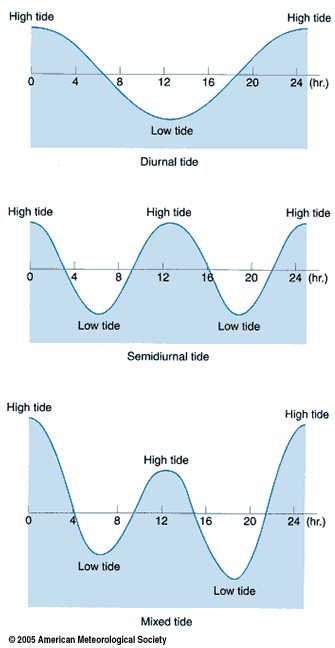There are actually many types of tides. That is what makes tidal energy so interesting. There is a sinusoidal fluctuation of the energy of waves.
The strength of tides is determined by the relationship between where the moon is relative to the Earth.
On Atlantic Coast, semi-diurnal tides occur. These consist of two high and two low tides daily with little variation. On the other side, diurnal tides consist of one high and one low tide. Mixed tides are the same as semi-diurnal tides but have greater disparity between high and low tides.
An incoming tide is a flood tide and an outgoing tide is a ebb tide. The period in between is the slack tide. We also have riptides, which are strong, subsurface currents that conflict with another current. These usually occur at areas of violent underwater activity. They are usually underwater currents and cannot be seen on the surface. On the other hand, tiderips can be seen on the surface and look like choppy water.
Pictures of types of tides:
RIPTIDE
TIDERIP
Sources:
http://oceanmotion.org/html/background/tides-types.htm
http://www.oregon.gov/DSL/SSNERR/docs/EFS/EFS02typetides.pdf
http://en.wikipedia.org/wiki/Rip_tide




No comments:
Post a Comment